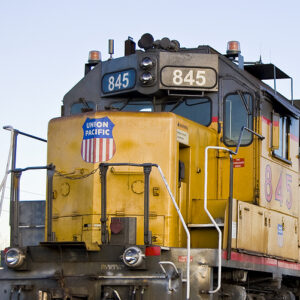As a historic coast-to-coast rail merger looms, the question isn’t just whether Washington will approve it, but whether it will finally modernize the outdated regulations that threaten to derail its potential.
Advocates for the proposed union of Union Pacific and Norfolk Southern say it promises a more efficient, integrated freight network across America’s heartland—one that could ease trucking congestion, lower shipping costs, and supercharge economic growth. But unless long-overdue reforms at the Federal Railroad Administration (FRA) ride alongside the merger, experts warn that entrenched rules and labor politics could blunt its benefits before the first train ever departs.
“We approach this development with measured skepticism rooted in the real-world impact such consolidation could have on rail workers, safety, service quality, and the long-term health of the freight rail industry,” said the transportation division of SMART, the International Association of Sheet Metal, Air, Rail and Transportation Workers.
The proposed merger would create a coast-to-coast rail network that could reduce supply chain chokepoints, improve long-haul efficiency, and help rail better compete with trucking, rail industry officials and observers said.
But the politics of rail—which became complicated in the wake of a derailment in southeastern Ohio in February 2023 —are notoriously tangled, and this deal is no exception. Reporting on the merger so far has noted that end-to-end rail service could benefit shippers and ease pressure on congested trucking routes, but that approval could largely depend on political will.
“While President Trump speaks glowingly about a modern business future, there’s no certainty … that the Trump White House will even allow the proposed merger to go through,” Forbes contributor John Tamny wrote. “The Trump administration has a tangled history with M&A that potentially imperils the deal.”
For decades, the Federal Railroad Administration (FRA), part of the U.S. Department of Transportation (USDOT), has operated more like a gatekeeper than an enabler of innovation—beholden to a “mother-may-I” paradigm, industry observers have said. The FRA’s approach often reflects a labor-union-first mindset, resisting technologies and practices that could modernize safety and operations, particularly when those innovations threaten long-standing power for Big Labor.
One glaring example is the Biden-era crew size rule, which mandates a minimum of two crew members per train, regardless of train type, route characteristics, or available safety technologies. Instead of relying on risk-based analysis or actual safety data, the FRA has leaned heavily on vague “common sense” justifications and union talking points. This blanket rule freezes legacy operating models in place, effectively outlawing the evolution of freight rail workforces, even as global competitors adopt more flexible, efficient approaches.
Despite President Donald Trump’s deregulatory posture in many areas, the current administration’s decision to defend this rule in court suggests a troubling alignment with labor priorities over safety and efficiency outcomes. If allowed to stand, the crew size mandate could severely hamper innovation, disincentivize private investment, and undermine the potential gains of a unified transcontinental rail network, observers said.
Another blocked innovation is Automated Track Inspection (ATI), a technology that uses lasers and cameras mounted to locomotives or railcars to inspect track conditions at full train speed. It identifies defects invisible to the human eye, simulates how the track performs under load, and enables predictive maintenance planning that enhances both safety and efficiency.
Pilot programs have delivered staggering results, with one test showing ATI identified 200 times more defects than visual inspections alone. Another test demonstrated a more than 90% reduction in unprotected FRA mainline defects when ATI was used.
The FRA’s own data show visual inspection rules haven’t changed since 1971, despite today’s vastly different safety landscape.
The Association of American Railroads recently filed a waiver petition to implement this approach nationwide. Key provisions of that petition include remediating serious defects within 48 hours of ATI detection, which is more strict than current federal rules.
The petition also proposes reducing the number of required visual track inspections, replacing them with continuous ATI monitoring. Railroads argue this would not only improve safety but also free up personnel to focus on more complex maintenance tasks that technology cannot yet perform.
Critics, however, contend that reducing visual inspections could increase risks if technology fails or misses defects. Labor unions have expressed concern that adopting ATI nationwide could lead to workforce reductions, echoing their opposition to other automation technologies in the industry.
The debate underscores a broader tension in the rail sector: how to balance safety, efficiency, and modernization while protecting jobs and adhering to longstanding labor agreements. Supporters of reform argue that without embracing proven innovations like ATI and revisiting restrictive crew size mandates, the U.S. freight rail system will struggle to remain competitive with global counterparts that are rapidly advancing.
“Overly prescriptive rules have accumulated over time and should be eliminated or modernized to focus on performance outcomes, not rote compliance with outdated standards,” said Marc Scribner, senior transportation policy analyst at Reason Foundation.
“The most concerning are the Federal Railroad Administration’s anti-innovation policies pursued during the Biden administration, such as those aimed at restricting the use of track inspection and train automation technologies. If this course is not reversed, shippers and consumers will needlessly face higher prices and worsening freight transportation service quality.”


